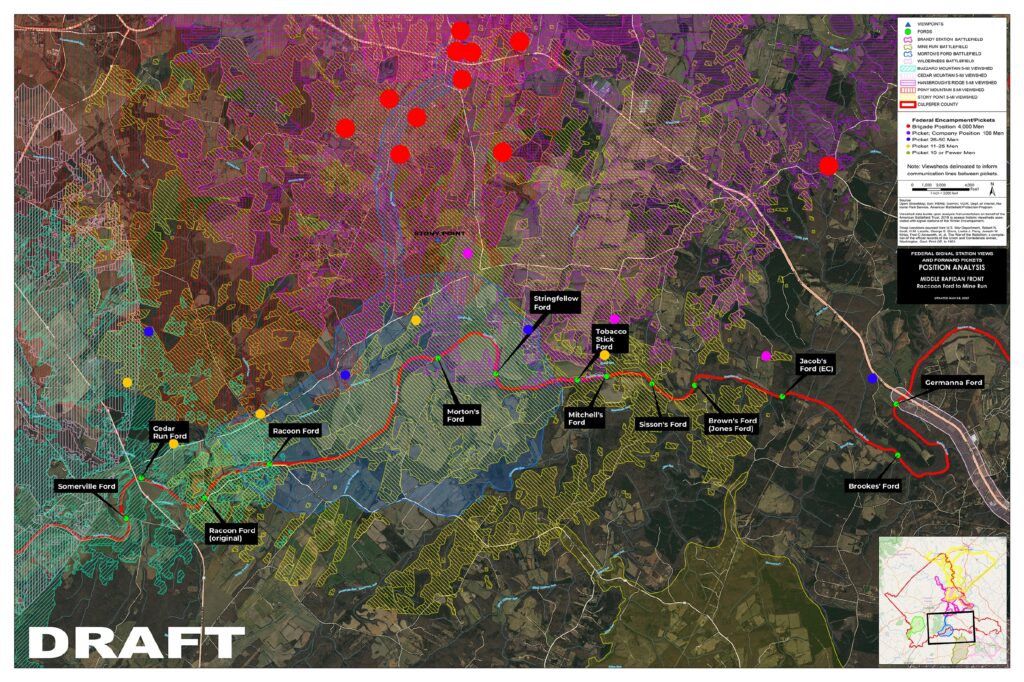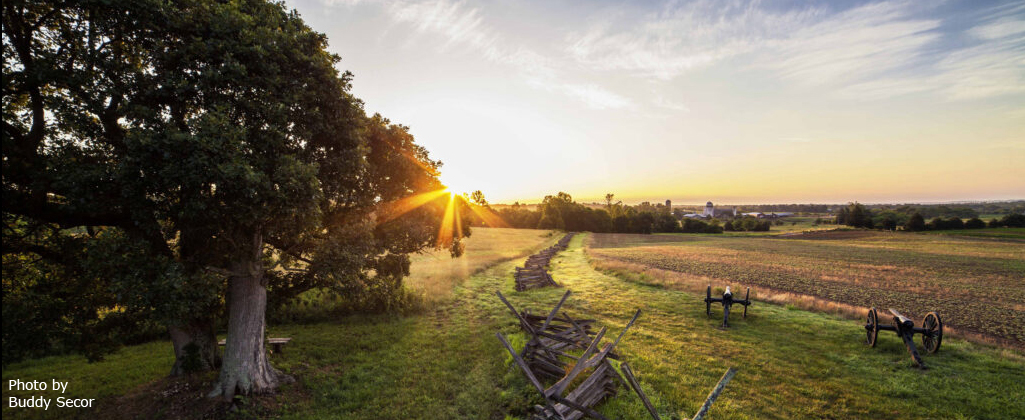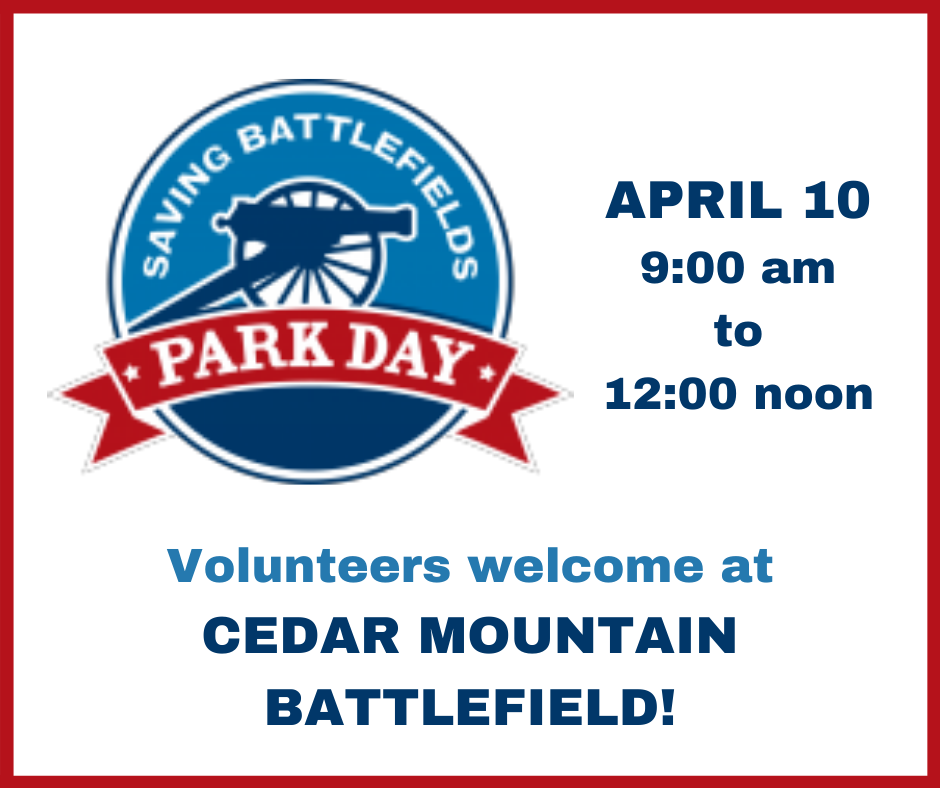Introduction to the Union Reports of the Official Records of the War of the Rebellion for the Battle of Cedar Mountain.
To further the mission of educating the public about the Battle of Cedar Mountain and to facilitate research of the August 9, 1862 battle, Friends of Cedar Mountain presents here a compilation of the Official Union Reports of the engagement as found in “The War Of The Rebellion: A Compilation of the Official Records of the Union and Confederate Armies, Volume XII, Part II (Serial No. 16).”
Having access to the reports written in the days following the engagement will enhance the battlefield visitors’ experience, as you can now stand where (for example) Union General Samuel W. Crawford’s 3 regiments broke through the Confederate Left and destroyed the Confederate brigade of Thomas Garnett. The battlefield has changed little since 1862, and walking the ground gives visitors a clear understanding of the terrain.
The following aggregate of the 26 Union reports are listed in the same order as they appear in the Official Records cited above.
Suggested Reading Order.
To assist with an understanding of the flow of the battle, the following suggestions are offered as to reading order. (Please note that all the individual reports cover the battle from beginning to end so there will be overlap in the narratives.)
Start with the high command, No. 1., Major-General John Pope’s report, to get his perspective of the action. Though he could hear the cannonading at Culpeper, General Pope writes that he was not expecting a battle, and General Banks sent reports to him that no attack was expected, so Pope remained in Culpeper until the increased noise of the battle suggested to him otherwise. There is no report from Major-General Banks, commanding Union forces on the battlefield. The two Union divisions in the fight were commanded by Generals Augur and Williams.
General Christopher C. Augur commanded the Union left and center. Read his report, No. 11, next. His two brigades were led by General John White Geary (center) and General Henry Prince (left). General Prince was captured during the fight and sent to prison in Richmond. He wrote his report in November after his prisoner exchange. Colonel Henry J. Stainrook’s report, 109th Pennsylvania Infantry, from Prince’s brigade, was found in Volume 51, (Supplemental Reports) and posted here un-numbered. I have not found any other reports from this brigade as yet. Because there are more reports connected with Geary’s command, it might be easier to read Prince, No. 19, & Stainrook, un-numbered, first, and then dive into the several reports from Geary’s Brigade, Numbers 12 through 17. This includes Captain Joseph Knap’s artillery report of the Union batteries that replied to the Confederate artillery that opened the engagement. Captain Clermont L. Best’s report was recently located and posted here; (from Vol. 51, Supplemental Reports). Captain Best is General Banks Chief of Artillery for the corps, and his report nicely complements Knap’s report. These reports provide battle details at the regimental level. Pay attention to the references to the 8th and 12th Battalion of U.S. Regulars that skirmished with Confederate artillery at the opening of the ground moves, because for all their impressive performance they did not have their report reproduced in this volume. Among their number Private John L. Younker was awarded the Medal of Honor for his bravery.
The story of the Union right is the story of the climax of the battle of Cedar Mountain for the Federals. General Alpheus S. Williams commanded the right division which included two brigades; General Samuel W. Crawford’s and General George H. Gordon’s. Read Williams’ report first for an overview, No. 7, then read Crawfords’s report, No. 8. Crawford’s comments barely conceal his seething anger at the destruction of the regiments in his unsupported brigade. The compilation of Union casualties, Report No. 2, given in table format, speaks volumes to this. Gordon’s Brigade, which was supposed to support Crawford’s attack, also took heavy casualties, but not half as much as Crawford’s men. General Gordon’s report was filed late, so it was placed in an Appendix. I have placed it in proper sequence here but it is un-numbered. Also un-numbered is the report of Col. Thomas Ruger, found in Vol. 51, (Supplemental reports). Six companies of Col. Ruger’s 3rd Wisconsin Volunteers were ordered to accompany Crawford’s brigade when it attacked, but a few minutes delay for various reasons, made a great deal of difference in what the 3rd Wisconsin would experience. Ruger’s report is followed by the other two colonel’s from Gordon’s brigade; Col. George Andrews of the 2nd Massachusetts, No. 9, and Col. Silas Colgrove of the 27th Indiana, No. 10.
A climactic cavalry charge by the 1st Pennsylvania Cavalry ended the action for General Banks’ 2nd Army Corps. Major Richard I. Falls left a brief account of the dramatic charge, in report No 4. Since we are with the cavalry, report No. 3, Col. Samuel H. Allen, gives an account of the Union Cavalry skirmish line that was dispersed at the very commencement of the battle.
The reading order of the remaining reports really doesn’t matter. Further interesting details can be gleaned from all of them. But in order of events, the troops of General James B. Ricketts’ Division arrived on the battlefield at night to shore up and hold the Union line where General Banks had been forced to retreat, reports 20 — 25. Rickett’s arrival, along with the darkness, halted the Confederate counter-attack. The report of Maj. Davis Tillson, No. 21, commanding Ricketts’ artillery, describes the late night artillery duel, including the brief exciting fight with Captain William J. Pegram’s battery that closed the action. Captain James Thompson’s artillery report adds more detail about this encounter. It was Thompson’s battery that silenced Pegram, inflicting serious damage upon the Confederate battery. This leaves a smattering of reports to fill in the blanks. There is a fascinating account of the signal men at Thoroughfare Mountain, No. 6 & 18; the several reports of brigade commanders under Ricketts (22-25); and Brig. General Robert Milroy’s rather frenetic report of his Independent Brigade’s exploits on the days following the battle, No. 5.
* * * * * * * * *
Union Reports
- No. 1. — Maj. General John Pope, U. S. Army, commanding Army of Virginia, with congratulatory orders.
- No. 2. — Return of Casualties in the Union forces.
- No. 3. — Col. Samuel H. Allen, First Maine Cavalry.
- No. 4. — Maj. Richard I. Falls, First Pennsylvania Cavalry.
- Un-numbered. — Capt. Clermont L. Best, Chief of Artillery, Second Corps, Army of Virginia.
- No. 5. — Brig. Gen. Robert H. Milroy, U. S. Army, commanding Independent Brigade, First Corps, of operations August 8—13.
- No. 6. — Lieut. William W. Rowley, Twenty-eighth New York Infantry, Acting Signal Officer, Second Corps.
- No. 7. — Brig. Gen. Alpheus S. Williams, U. S. Army, commanding First Division, Second Corps.
- No. 8. — Brig. Gen. Samuel W. Crawford, U. S. Army, commanding First Brigade.
- Un-numbered. — Brig. Gen. George H. Gordon, U. S. Army, commanding Third Brigade.
- Un-numbered. Col. Thomas H. Ruger, Third Wisconsin Infantry, Third Brigade.
- No. 9. — Col. George L. Andrews, Second Massachusetts Infantry, Third Brigade.
- No. 10. — Col. Silas Colgrove, Twenty-seventh Indiana Infantry.
- No. 11. — Brig. Gen. Christopher C. Augur, U. S. Army, commanding Second Division.
- No. 12. — Brig. Gen. John W. Geary, U. S. Army, commanding First Brigade.
- No. 13. — Capt. Joseph M. Knap, Battery E, Pennsylvania Light Artillery.
- No. 14. — Col. John H. Patrick, Fifth Ohio Infantry.
- No. 15. — Col. William R. Creighton, Seventh Ohio Infantry.
- No. 16. — Capt. Wilbur F Stevens, Twenty-ninth Ohio Infantry.
- No. 17. — Col. Charles Candy, Sixty-sixth Ohio Infantry.
- No. 18. — Lieut. Col. Hector Tyndale, Twenty-eighth Pennsylvania Infantry, of reconnaissance to Thoroughfare Mountain.
- No. 19. — Brig. Gen. Henry Prince, U.S. Army, commanding Second Brigade.
- Un-numbered. — Col. Henry J. Stainrook, One-hundred-ninth Pennsylvania Infantry.
- No. 20. — Brig. Gen. James B. Ricketts, U.S. Army, commanding Second Division, Third Corps.
- No. 21. — Maj. Davis Tillson, Chief of Artillery, Second Division.
- Un-numbered. — Capt. James Thompson, Independent Battery, Light Pennsylvania Artillery.
- No. 22. — Brig. Gen. Abram Duryea, U. S. Army, commanding First Brigade.
- No. 23. — Brig. Gen. Zealous B. Tower, U. S. Army, commanding Second Brigade.
- No. 24. — Brig. Gen. George L. Hartsuff, U. S. Army, commanding Third Brigade.
- No. 25. — Samuel S. Carroll, Eighth Ohio Infantry, commanding Fourth Brigade.






